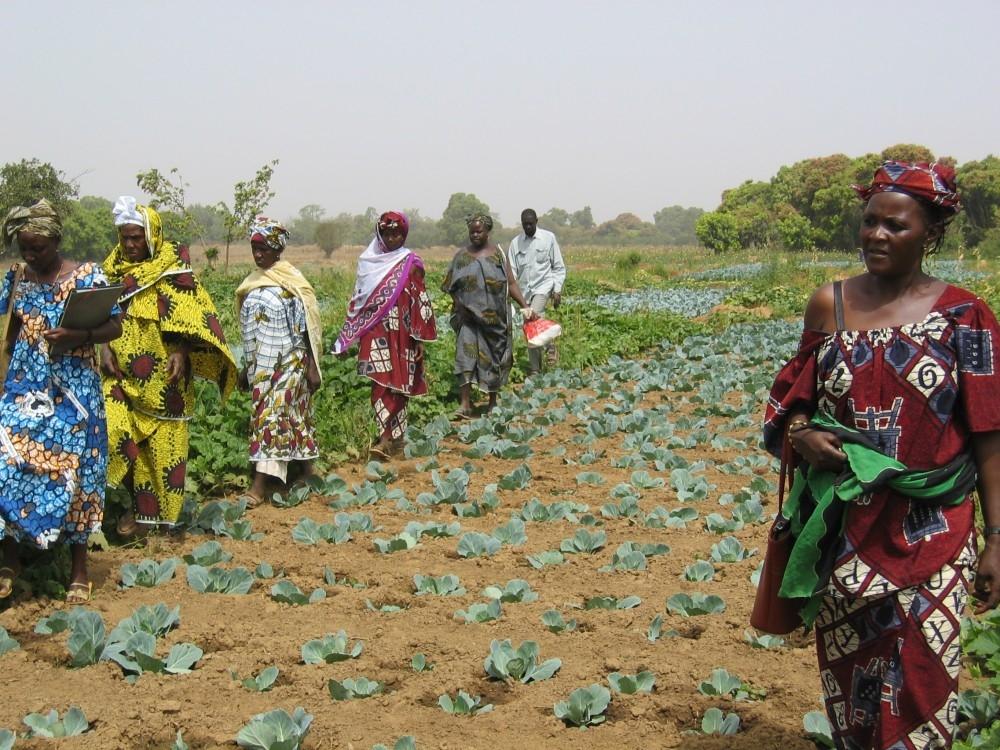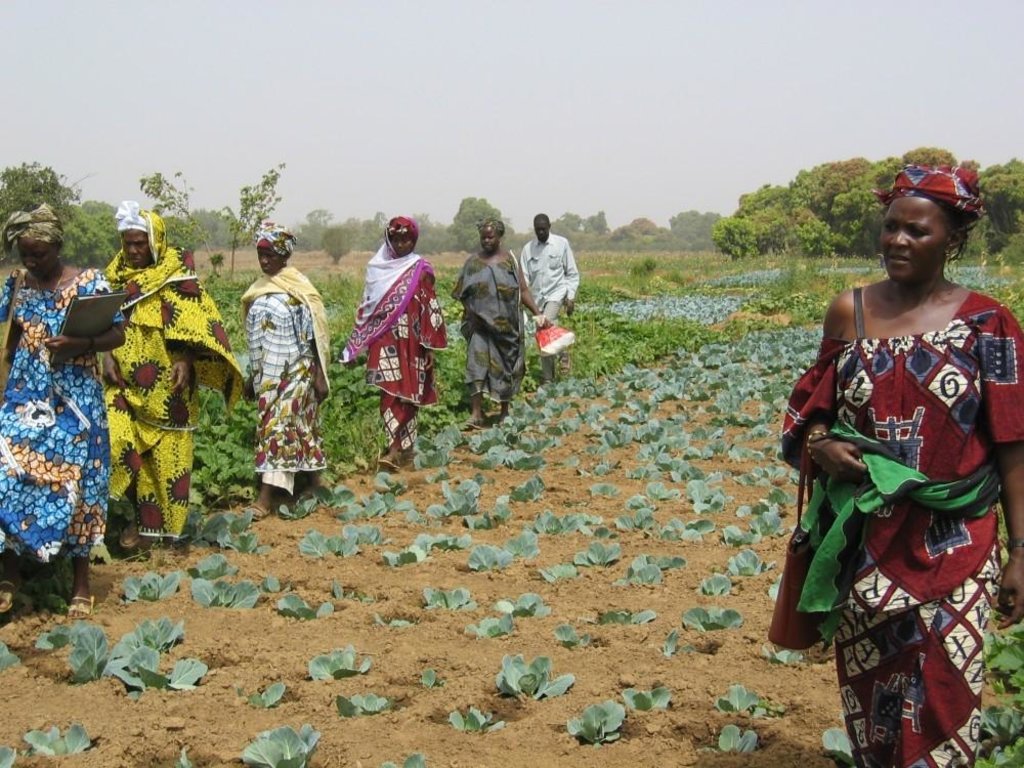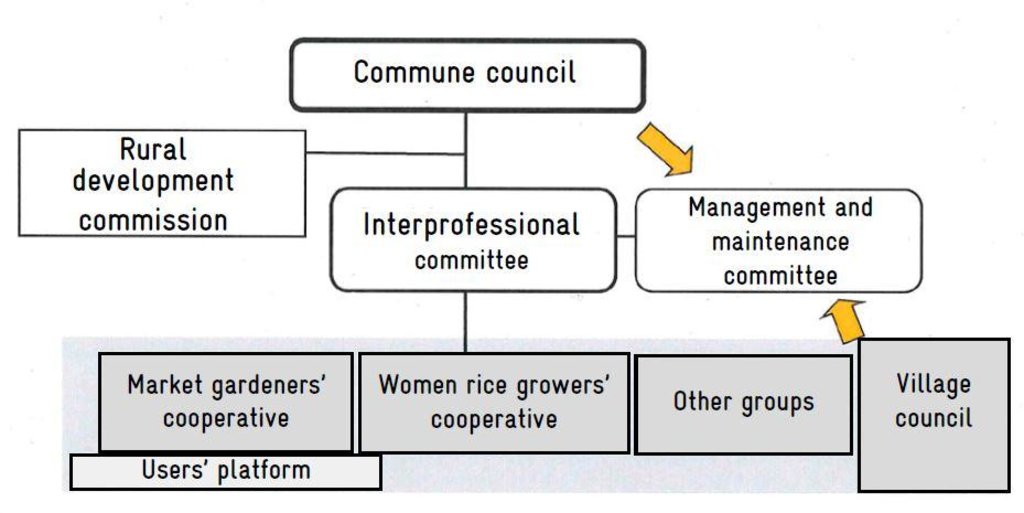Delegating the management of facilities to users [مالي]
- تاريخ الإنشاء:
- تحديث:
- جامع المعلومات: Dieter Nill
- المحرر: –
- المُراجع: Laura Ebneter
Délégation de gestion des équipements aux exploitants (French)
approaches_2503 - مالي
عرض الأقسام
توسيع الكل طي الكل1. معلومات عامة
1.2 تفاصيل الاتصال بالأشخاص الرئيسيين لمصدر المعلومات والمؤسسات المعنية بتقييم وتوثيق النهج
متخصص في الإدارة المستدامة للأراضي:
Tamini Jacques
jacques.tamini@helvetas.org
HELVETAS - Swiss Intercooperation
مالي
متخصص في الإدارة المستدامة للأراضي:
Doumbia Moussa
douballa03@yahoo.fr / bulonbasecom@yahoo.fr
Intercommunalité de Bougouni "Bulonba"
مالي
اسم المؤسسة (المؤسسات) التي سهلت توثيق/تقييم النهج (إذا كان ذلك على صلة)
Deutsche Gesellschaft für Internationale Zusammenarbeit (GIZ) GmbH (GIZ) - ألمانيااسم المؤسسة (المؤسسات) التي سهلت توثيق/تقييم النهج (إذا كان ذلك على صلة)
HELVETAS (Swiss Intercooperation)1.3 الشروط المتعلقة باستخدام البيانات الموثقة من خلال WOCAT
متى تم تجميع البيانات (ميدانيا)؟:
01/07/2012
يوافق جامع المعلومات والشخص (لاشخاص) الرئيسي لمصدر المعلومات على الشروط المتعلقة باستخدام البيانات الموثقة من خلال WOCAT:
نعم
2. وصف نهج الإدارة المستدامة للأراضي
2.1 وصف موجز للنهج
Promote the sustainability and cost effectiveness of schemes by setting up management delegation systems that enable local authorities to entrust infrastructure owned by the territorial community to groups of local farmers.
2.2 وصف تفصيلي للنهج
وصف تفصيلي للنهج:
The basic economic infrastructure is usually provided through state or decentralised-authority funding. The building phase of the project is entirely managed by the territorial community (TC). A delegation process ensures that responsibility for managing this infrastructure is transferred to beneficiary actors organised in user associations. Agreements are concluded between the TCs and communities with the aim of guaranteeing the sustainability and economic viability of facilities. This agreement makes it possible to extend the ownership of schemes beyond that of the traditional management committee model. It can also increase local tax revenues and prolong the lifespan of facilities when they are well run.
The commune is the owner of the scheme but delegates its management to a user group (an interprofessional farming committee for lowland development projects) by means of a management delegation contract. Member subscription fees and upkeep fees are paid into a bank account opened by the community. The commune has the right to oversee the administrative and financial management of the delegatee and ensures the application of access and farming rules in the scheme. Group managers regularly report on activities to other members and the commune.
The commune council undertakes the overall project management of the installation works, contributes to funding the developments, provides key guidance on farming matters, delegates the management of the infrastructure to the interprofessional committee (IPC), supports the IPC in recovering fees, and ensures the monitoring and development of the project. The rural development commission of the commune council exists within each council. Its role is to catalogue the issues actors face and propose solutions to the commune council, support cooperatives in their search for partners together with the IPC, research the land titles for schemes on behalf of the council (registration), validate the development plan, support IPC in managing conflicts between cooperatives, and carry out any other tasks that are required of it by the commune council. The interprofessional committee brings together representatives from different cooperatives, associations and groups and takes on the delegated management role. Its role is to: maintain communications between users, the town hall and partners; coordinate activities that affect several local-level cooperatives; ensure the rational use of lowland resources; secure the agreement of the different user groups on the rules for accessing and dividing up the scheme site; assess and validate the cooperatives’ farming plans (individual needs analysis in terms of production capacity); monitor the use of inputs, seed and equipment obtained by the cooperatives; receive the fees collected by each cooperative from its members; manage renovation and maintenance funds; prevent conflicts of interest arising among the cooperatives. The management committee is a sub-committee within IPC and is tasked with managing water supply (opening and closing the distribution gates), carrying out small-scale maintenance and alerting the IPC to any failures to respect the farming code. Consultancies facilitate the process, support the institutional and organisational strengthening of actors and provide training on management tools. Technical services ensure the application of technical and environmental standards and ensure sound financial management (fee collection, financial controls, delegated public procurement). The project team provides advisory support, organises users structurally and delivers training, tools, coordination and monitoring.
2.3 صور عن النهج
2.5 البلد/المنطقة/المواقع التي تم تطبيق النهج فيها
البلد:
مالي
المنطقة/الولاية/المحافظة:
Mali
مزيد من التفاصيل حول الموقع:
Sikasso region, circles of Bougouni, Kolondiéba and Yanfolila
2.6 تواريخ بدء وإنهاء تنفيذ النهج
أشر إلى سنة البدء:
2008
2.8 الغايات/الأهداف الرئيسية للنهج
The Approach focused mainly on SLM with other activities
The objective of the practice is to promote the sustainability and cost effectiveness of schemes by setting up management delegation systems that enable local authorities to entrust infrastructure owned by the territorial community to groups of local farmers.
The SLM Approach addressed the following problems: lack of infrastructure for local farmers, low sustainability and cost-effectiveness of schemes
2.9 الظروف التي تمكن أو تعيق تنفيذ التقنية/التقنيات المطبقة بموجب النهج
المعرفة حول الإدارة المستدامة للأراضي، والوصول إلى الدعم الفني
- معيق
The basic economic infrastructure is usually provided through state or decentralised-authority funding.
Treatment through the SLM Approach: A delegation process ensures that responsibility for managing this infrastructure is transferred to beneficiary actors organised in user associations with the aim of guaranteeing the sustainability and economic viability of facilities.
3. المشاركة وأدوار الأطراف المعنية
3.1 أصحاب المصلحة المعنيون بالنهج وأدوارهم
- مستخدمو الأراضي المحليون/المجتمعات المحلية
- متخصصون في الإدارة المستدامة للأراضي / مستشارون زراعيون
- الحكومة المحلية
- الحكومة الوطنية (المخططون، صانعو القرار)
3.2 انخراط مستخدمي الأراضي المحليين/المجتمعات المحلية في المراحل المختلفة للنهج
| انخراط مستخدمي الأراضي المحليين/المجتمعات المحلية | حدد من شارك وصف الأنشطة | |
|---|---|---|
| المبادرة/التحفيز | تفاعلي | |
| التخطيط | تفاعلي | |
| التنفيذ | تفاعلي | |
| الرصد/التقييم | تفاعلي | |
| Research | سلبي |
3.3 مخطط التدفق (إذا كان متاحًا)
الوصف:
The measure relies on the direct actors shown in the diagram, who are supported by other stakeholders. From the start of installation works, the commune supports the project in setting up a management system. Installation works are co-funded by the technical and financial partners (TFP), communes and beneficiary villages. It must nevertheless be highlighted that the infrastructure remains the property of the commune and beneficiaries must pay a fee for its upkeep. The commune selects the consultancy (project manager) and chooses the contractor. The commune also Monitors scheme installation and accepts works. A second consultancy is tasked with giving producers guidance on farming and management techniques. The different user groups (market gardeners/planters, women rice growers, livestock farmers, etc.) are formed into interprofessional committees or farming committees. The commune draws up the draft delegated management contract with the interprofessional committee or the cooperative. To this end, it evaluates the potential of the resources that can be mobilised and discusses with its partners the rules for farming the scheme and the methods for its maintenance and repair. Following this, the contract is signed.
3.4 اتخاذ القرار بشأن اختيار تقنية/تقنيات الإدارة المستدامة للأراضي
حدد من الذي قرر اختيار التقنية/التقنيات التي سيتم تنفيذها:
- مستخدمو الأراضي بشكل أساسي، بدعم من متخصصي الإدارة المستدامة للأراضي
اشرح:
Decisions on the method of implementing the SLM Technology were made by mainly by land users supported by SLM specialists
4. الدعم الفني وبناء القدرات وإدارة المعرفة
4.2 خدمة استشارية
هل يملك مستخدمو الأراضي وصولا إلى خدمة استشارية؟:
نعم
حدد ما إذا كانت الخدمة الاستشارية متوفرة:
- في مراكز دائمة
وصف/تعليقات:
Advisory service is quite adequate to ensure the continuation of land conservation activities; Setting up this system requires ongoing support for two to five years to allow beneficiaries to take ownership of the scheme.
4.3 تعزيز المؤسسات (التطوير التنظيمي)
هل تم إنشاء أو تعزيز مؤسسات من خلال هذا النهج؟:
- نعم، باعتدال
حدد المستوى (المستويات) التي تم فيها تعزيز أو إنشاء المؤسسات:
- محلي
حدد نوع الدعم:
- مالي
4.4 الرصد والتقييم
هل يشكل الرصد والتقييم جزءا من النهج؟:
نعم
التعليقات:
technical aspects were ad hoc monitored by project staff, land users through observations
socio-cultural aspects were ad hoc monitored by project staff, land users through observations
economic / production aspects were ad hoc monitored by project staff, land users through measurements
There were no changes in the Approach as a result of monitoring and evaluation
There were no changes in the Technology as a result of monitoring and evaluation
4.5 البحوث
هل كانت البحوث جزءًا من النهج؟:
نعم
حدد المواضيع:
- علم الاجتماع
- الاقتصاد / التسويق
- علم الايكولوجيا
- تكنولوجيا
5. التمويل والدعم المادي الخارجي
5.1 الميزانية السنوية لمكون الإدارة المستدامة للأراضي في النهج المذكور
التعليقات (على سبيل المثال المصادر الرئيسية للتمويل/الجهات المانحة الرئيسية):
Approach costs were met by the following donors: private sector (technical and financial partners (TFP)): 85.0%; local government (district, county, municipality, village etc) (commune): 10.0%; local community / land user(s) ( village): 5.0%
5.2 الدعم المالي/المادي المقدم لمستخدمي الأراضي
هل حصل مستخدمو الأراضي على دعم مالي/ مادي لتنفيذ التقنية/ التقنيات؟:
نعم
إذا كانت الإجابة بنعم، حدد نوع (أنواع) الدعم والشروط والمزودين:
Installation works are co-funded by the technical and financial partners (TFP), communes and beneficiary villages. In small-scale irrigation projects, for example, the project provides up to 85% of the funds; the village 5% and the commune 10%. The beneficiaries contribute either in-kind or financially.
5.3 إعانات لمدخلات محددة (بما في ذلك العمالة)
إذا كان العمل من قبل مستخدمي الأراضي مدخلاً جوهريًا، فهل كان:
- تطوعي
6. تحليل الأثر والتصريحات الختامية
6.1 آثار النهج
هل ساعد النهج مستخدمي الأراضي على تنفيذ وصيانة تقنيات الإدارة المستدامة للأراضي؟:
- لا
- نعم، قليلا
- نعم، باعتدال
- نعم، إلى حد كبير
Consensually agreed farming codes and rules are instituted and monitored. Agreements are concluded between the TCs and communities with the aim of guaranteeing the sustainability and economic viability of facilities.
هل ساهم النهج في تمكين الفئات المحرومة اجتماعيا واقتصاديا؟:
- لا
- نعم، قليلا
- نعم، باعتدال
- نعم، إلى حد كبير
Did other land users / projects adopt the Approach?
- لا
- نعم، قليلا
- نعم، باعتدال
- نعم، إلى حد كبير
The system was first initiated and developed at 34 commercial infrastructure trade fairs. Today, it involves 15 farming sites. The practice has been applied since 2008.
Did the Approach lead to improved livelihoods / human well-being?
- لا
- نعم، قليلا
- نعم، باعتدال
- نعم، إلى حد كبير
In the Bougouni area, 552 hectares are being farmed by 1,671 rice growers, 80% of whom are women. Production has increased for 70% of growers. The principle of a maintenance fund has been accepted and is now operational, with deposits ranging from 75,000 to 300,000 CFA francs per year
Did the Approach help to alleviate poverty?
- لا
- نعم، قليلا
- نعم، باعتدال
- نعم، إلى حد كبير
6.2 المحفز الرئيسي لقيام مستخدمي الأراضي بتنفيذ الإدارة المستدامة للأراضي
- زيادة الإنتاج
- زيادة الربح (القدرة)، وتحسين نسبة التكلفة إلى العائد
6.3 استدامة أنشطة النهج
هل يمكن لمستخدمي الأراضي المحافظة على استدامة ما تم تنفيذه من خلال النهج (بدون دعم خارجي)؟:
- غير مؤكد
إذا كان الجواب لا أو غير متأكد، حدد ذلك وعلق عليه:
Setting up this system requires ongoing support for two to five years to allow beneficiaries to take ownership of the scheme.
6.4 نقاط قوة/مزايا النهج
| نقاط القوة/ المزايا/ الفرص من وجهة نظر جامع المعلومات أو غيره من الاشخاص الرئيسيين لمصدر المعلومات |
|---|
| Many repairs are already being handled by the delegated management structures. These structures ensure that the consensually agreed rules are appropriately applied. A new kind of partnership has been created between the local authorities and village communities. |
|
It can increase local tax revenues and prolong the lifespan of facilities when they are well run. How to sustain/ enhance this strength: The commune authorities must be willing to promote transparency in communications on works procurement and accept requests for clarification (public audits). The community must have leaders in place who are prepared to lead frank public discussions among key players that are also courteous and respectful. This also applies to the management committee. Monitoring and evaluation of the delegation contract is essential between the commune and platform. It is important to undertake an annual review, the conclusions of which will also be shared with the wider community. To do this, the management committee must be in a position to draw up a balance sheet. The village must be prepared to contribute (with their labour or funds) towards installing the scheme, prior to registering it in the PDESC. It is essential to remove any ambiguity from bylaws for the scheme belonging to the commune. If it is true that actors rarely challenge the old, established rules for accessing rice growing sites, the same cannot be said for market gardens, where the plot allocation rules fall easily into place. Growers must pay the amounts/fees agreed with the commune.) |
| Subscription fees are collected more easily: 84% of members pay their subscription fees for the area in question. Consensually agreed farming codes and rules are instituted and monitored. In the Bougouni area, 552 hectares are being farmed by 1,671 rice growers, 80% of whom are women. Production has increased for 70% of growers. The principle of a maintenance fund has been accepted and is now operational, with deposits ranging from 75,000 to 300,000 CFA francs per year. |
7. المراجع والروابط
7.1 طرق جمع/مصادر المعلومات
- زيارات ميدانية، مسوحات ميدانية
- مقابلات مع مستخدمي الأراضي
7.2 المراجع للمنشورات المتاحة
العنوان، المؤلف، السنة، النظام القياسي الدولي لترقيم الكتب ISBN:
Manual of Good Practices in Small Scale Irrigation in the Sahel. Experiences from Mali. Published by GIZ in 2014.
متاح من أين؟كم التكلفة؟:
http://star-www.giz.de/starweb/giz/pub/servlet.starweb
العنوان، المؤلف، السنة، النظام القياسي الدولي لترقيم الكتب ISBN:
Rapport appui à la valorisation des ouvrages hydroagricoles [Report on supporting the development of small-scale irrigation schemes], GSAD, June 2012
العنوان، المؤلف، السنة، النظام القياسي الدولي لترقيم الكتب ISBN:
Annual report: Monitoring lowland areas, BEACIL, June 2012
الروابط والوحدات المواضيعية
توسيع الكل طي الكلالروابط
لا يوجد روابط
الوحدات المواضيعية
لا يوجد وحدات مواضيعية




